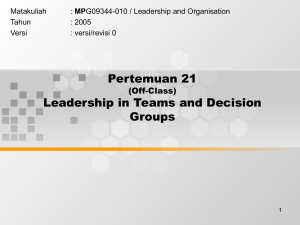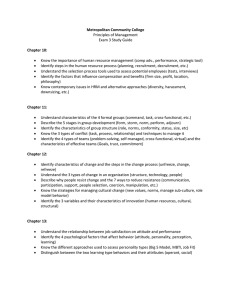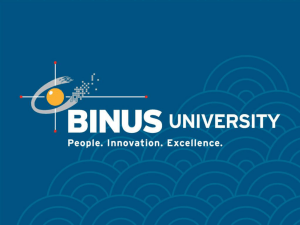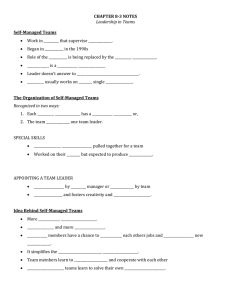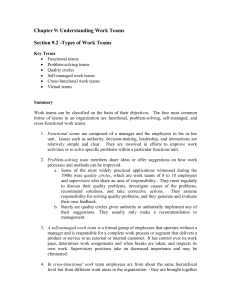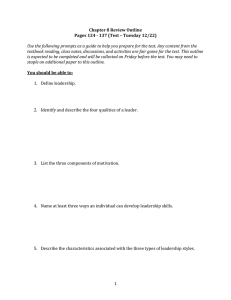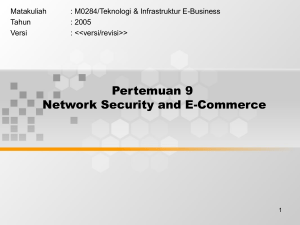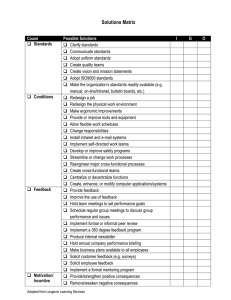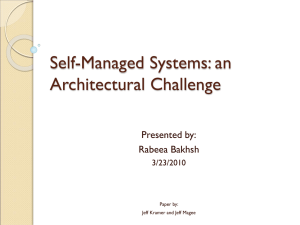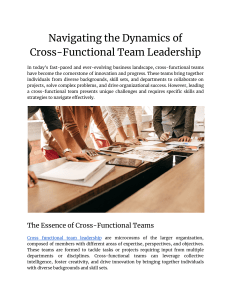Pertemuan 22 Leadership in Teams and Decision Groups (Off-Class)
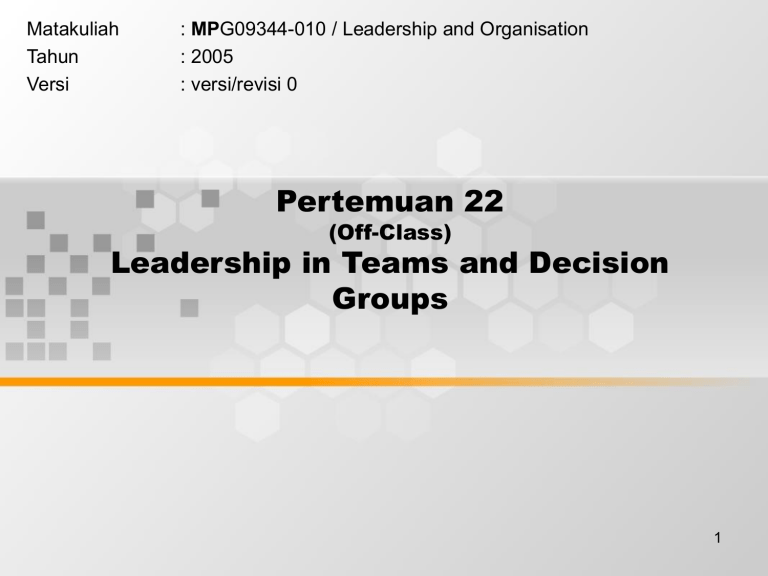
Matakuliah
Tahun
Versi
: MP G09344-010 / Leadership and Organisation
: 2005
: versi/revisi 0
Pertemuan 22
(Off-Class)
Leadership in Teams and Decision
Groups
1
Learning Outcomes
After studying these chapters students should be able to:
• Understand the process that determine how well a group performs an operational task.
• Understand the different types of teams that are commonly used in organizations and their implications for leadership.
• Understand how leadership is shared in self-managed teams and the conditions that make these teams more effective.
• Understand the advantages of cross-functional teams and the difficulties confronting leaders of these teams.
• Understand procedures to facilitate team learning and procedures to build trust and cooperation among team members.
• Understand why some groups make better decisions than others.
• Understand the primary leadership functions in decision groups
• Understand procedures for leading successful meetings.
2
Outline Materi
• Nature of Teams
• Functional Teams
• Cross-Functional Teams
• Self-Managed Work Teams
• Self-Defining Teams
• Virtual Teams
• Procedures for facilitating Team Learning
• Guidelines for Team Building
• Decision Making in Groups
• Leadership Functions in Meetings
• Guidelines for Leading Meetings
• Summary
• Cases
3
Leadership in Teams and
Decision Groups
4
• Procedures for facilitating team learning
– After-activity reviews
– Dialogue sessions
• Guidelines for team building
– Emphasize common interests and values
– Use ceremonies and rituals
– Use symbols to develop identification with the group
– Encourage and facilitate social interaction
5
– Tell people about group activities and achievements
– Conduct process analysis sessions
– Conduct alignment sessions
– Increase incentives for mutual cooperation
6
Decision making in groups
• Determinants of group processes
– Group size
– Status differentials
– Cohesiveness
– Diversity of membership
– Emotional maturity
– Physical environment
– Communication technology
7
Leadership functions in meetings
• Task Oriented Behavior
• Group Maintenance behavior
• Task and group maintenance functions
• Who should perform the leadership functions
– Leader-centered decision groups
– Group-centered decision groups
8
Guidelines for leading meetings
• Inform people about necessary preparations for a meeting
• Share essential information with group members
• Describe the problem without implying the cause or solution
• Allow ample time for idea generation and evaluation
9
• Separate idea generation from idea evaluation
• Encourage and facilitate participation
• Encourage positive restatement and idea building
• Use systematic procedures for solution evaluation
10
• Encourage members to look for an integrative solution
• Encourage consensus but do not insist on it
• Clarify responsibilities for implementation
11
Closing
• Summary
– Types of teams
– The potential advantages of teams
– The success of teams
– Team Building
– Group Decision
– The Leadership Role
12
• Review and Discussion Questions
• Cases
– Southwest Engineering Services
– Building Maintenance Inc.
• Companion Website : Exercises and Reading
• Supplementary Materials:
– Gronn, P. 1999. Life in Teams; Collaborative Leadership and
Learning in Autonomous Work Units . Australian Council for
Educational Administration: Australia.
– Street, M., D. 1997. Groupthink; An Examination of Theoritical
Issues, Implications, and Future Research Suggestions.
Small
Group Research. Vol. 28(1): 72-93
• Companion Website: Exercises and Reading
13
